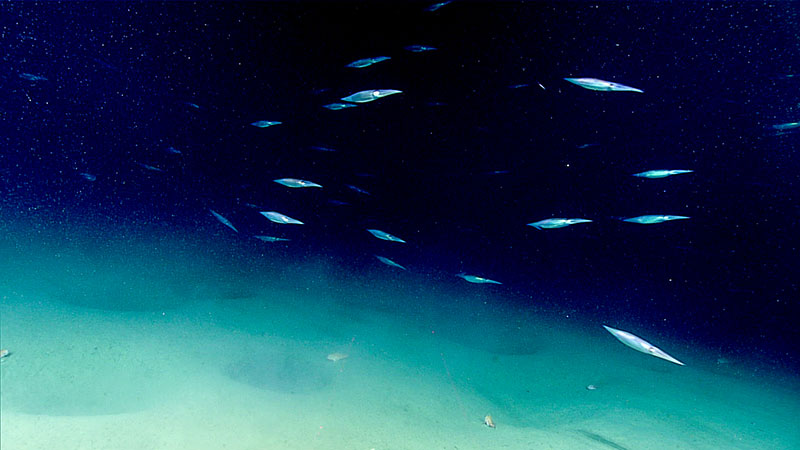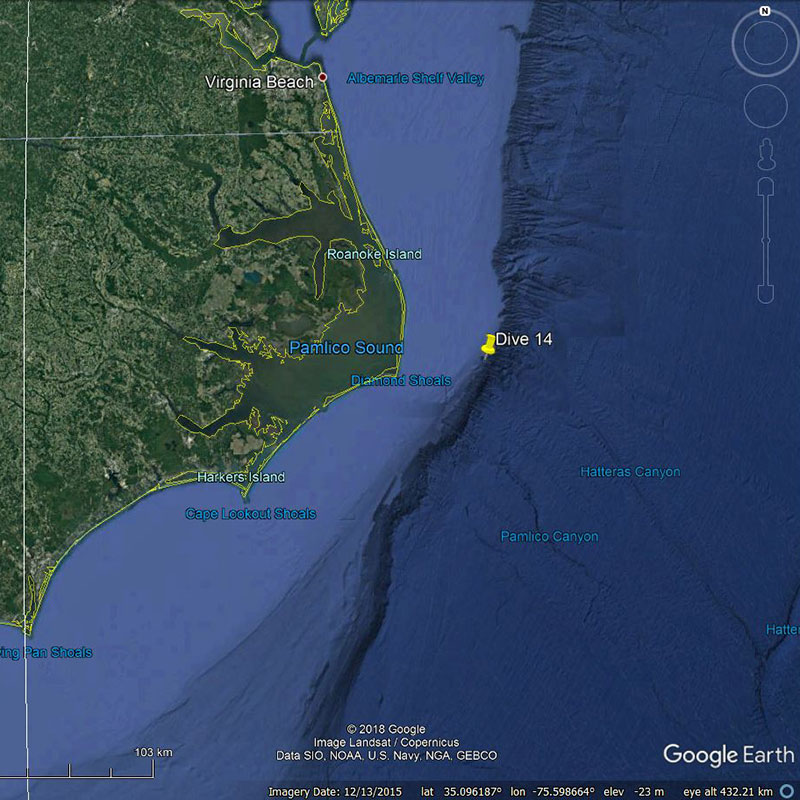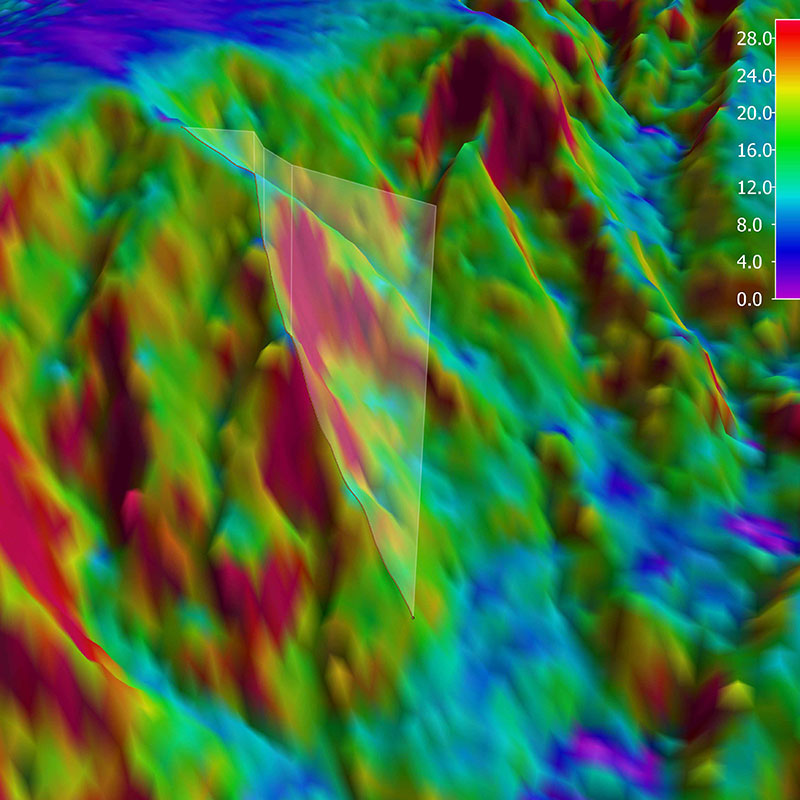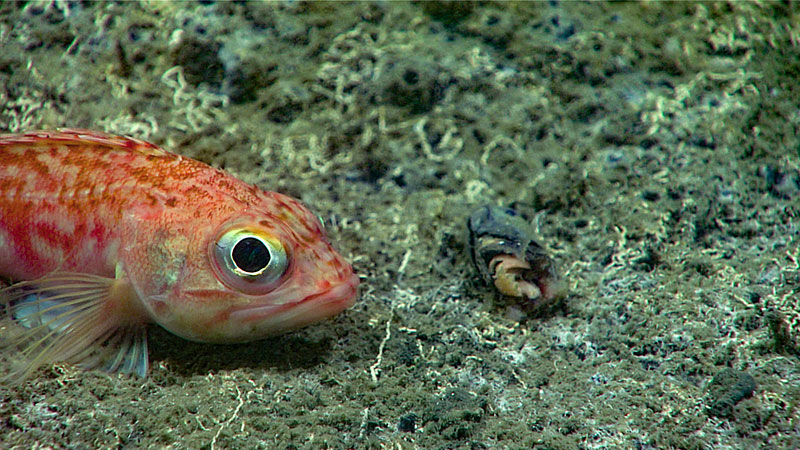Loading the player...
During the dive to explore on the southern side of Hatteras Canyon, the team encountered many instances of deep-sea predation, including a swimming crab eating a shrimp, an anemone making lunch out of an amphipod, a hagfish foraging in the sediment, and blackbelly rosefish snacking on fish heads.
Video courtesy of the NOAA Office of Ocean Exploration and Research, Windows to the Deep 2018. Download larger version (mp4, 57.7 MB).
Today’s dive was on the southern side of Hatteras Canyon, about 26 miles offshore North Carolina. This region was initially mapped by NOAA and the U.S. Geological Survey (USGS) during multiple expeditions between 2010 and 2017. The primary objective of this dive was to characterize the seafloor habitat at the head of this canyon. Due to the frequent position of the Gulf Stream, previous expeditions to this region had been unable to explore Hatteras Canyon, so the mission team was hopeful for good conditions as they approached the site. They were rewarded with an exciting dive filled with deep-sea predation and high water column biomass.

Image of the schooling Illex sp. of squid seen throughout Dive 14 of the Windows to the Deep 2018 expedition. Image courtesy of the NOAA Office of Ocean Exploration and Research, Windows to the Deep 2018. Download larger version (jpg, 1.4 MB).
Remotely operated vehicle (ROV) Deep Discoverer was on the seafloor from 12:57:03 - 20:14:57 UTC. The dive began at around 506 meters (1,660 feet) depth and transversed the side of the canyon, finishing the dive at a depth of around 302 meters (991 feet). The dive started with many organisms, mostly shrimp, and marine snow in the water column, suggesting a highly productive area. The ROV imaged two amphipods trying to escape being eaten by a tube anemone. One was able to escape, but the other one was not so lucky. Additionally, throughout the dive, many fish heads were seen on the seabed. The scientists hypothesized that the school of squid (Illex sp.) above the ROV throughout the dive was feeding on midwater fish, including myctophids, and the heads were falling to the seafloor as it is a common behavior for these squids to eat only part of the fish and not the whole animal. A couple of blackbelly rosefish were fortunate to be nearby and made a snack out of these fish heads. There were many other fish seen on this dive including eelpouts, hagfish, armored sea robin, flatfish, southern hake, and possibly a ryemouth, a relative of toadfish. Other species seen included anemones, snipe eels, sea stars, snails, dinner plate jelly, siphonophores, a dead acorn worm, and ctenophores. During the dive, bacterial mats were present, but extensive chemosynthetic communities were not observed. For more information on this dive visit the dive summary, which will be available soon.
With the ROV back onboard NOAA Ship Okeanos Explorer and the dive complete, the team is headed to Keller Canyon tomorrow.



